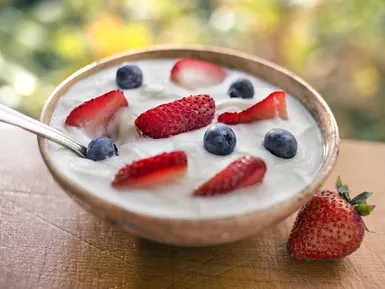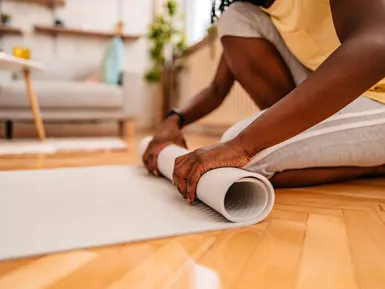
Pilates for Weight Loss: Your 7-Day Kickstart Guide
Introduction
Losing weight is a journey that involves a combination of healthy eating, regular physical activity, and a positive mindset. Pilates, a form of exercise that focuses on strengthening the core, improving flexibility, and enhancing overall body alignment, can be a valuable addition to your weight loss routine. In this blog post, we will explore the science behind Pilates for weight loss, provide you with a 7-day kickstart plan, and offer some unique insights and strategies to help you achieve your weight loss goals.
The Science Behind Pilates for Weight Loss
Energy Balance
Weight loss occurs when you create a calorie deficit, meaning you burn more calories than you consume. Pilates can contribute to weight loss by increasing your energy expenditure. While Pilates is not typically as high-intensity as some other forms of exercise, it still requires effort and can help you burn calories. Additionally, Pilates can help you build lean muscle mass, which can increase your metabolism and help you burn more calories at rest.
Hormone Regulation
Hormones play a crucial role in weight regulation. Pilates can help regulate hormones such as insulin, cortisol, and estrogen, which can impact your appetite, metabolism, and body composition. For example, Pilates can help improve insulin sensitivity, which can help your body better regulate blood sugar levels and reduce the risk of insulin resistance and type 2 diabetes. Pilates can also help reduce cortisol levels, which can help reduce stress and prevent the accumulation of belly fat.
Metabolic Adaptation
As you lose weight, your body may adapt by slowing down your metabolism to conserve energy. This can make it more difficult to continue losing weight. Pilates can help prevent metabolic adaptation by challenging your body in new ways and stimulating muscle growth. By incorporating Pilates into your weight loss routine, you can help keep your metabolism revved up and continue losing weight.
Unique Insights and Strategies for Weight Loss
Targeting Different Metabolic Types
Not everyone has the same metabolism, and what works for one person may not work for another. By understanding your metabolic type, you can tailor your weight loss plan to your specific needs. For example, if you have a slow metabolism, you may need to focus on increasing your physical activity and reducing your calorie intake more aggressively. If you have a fast metabolism, you may be able to eat more calories and still lose weight. Pilates can be a great exercise for all metabolic types, as it can help you build strength, improve flexibility, and increase your energy expenditure.
Breaking Through Weight Loss Plateaus
Weight loss plateaus are a common challenge for many people. When you reach a plateau, it means that your body has adapted to your current weight loss routine and is no longer losing weight. To break through a weight loss plateau, you need to change things up and challenge your body in new ways. Pilates can be a great way to break through a weight loss plateau, as it can help you build strength, improve flexibility, and increase your energy expenditure. By incorporating Pilates into your weight loss routine, you can help shock your body into losing weight again.
Non-Scale Victories
While the number on the scale is an important indicator of weight loss, it is not the only one. Non-scale victories, such as increased energy, improved sleep, and reduced stress, can also be important indicators of progress. Pilates can help you achieve non-scale victories by improving your overall health and well-being. By focusing on non-scale victories, you can stay motivated and committed to your weight loss journey, even when the scale isn't moving.
7-Day Kickstart Plan
Day 1: Foundation Building
- Warm-up: Start with 5-10 minutes of light cardio, such as walking or jogging in place. Then, do some gentle stretching exercises to warm up your muscles.
- Pilates workout: Focus on basic Pilates exercises, such as the hundred, roll-up, and single-leg stretch. Do each exercise for 30 seconds to 1 minute, and repeat the sequence 2-3 times.
- Cool-down: Finish your workout with 5-10 minutes of gentle stretching exercises to cool down your muscles and prevent injury.
Day 2: Core Strengthening
- Warm-up: Start with 5-10 minutes of light cardio, such as walking or jogging in place. Then, do some gentle stretching exercises to warm up your muscles.
- Pilates workout: Focus on core-strengthening Pilates exercises, such as the plank, side plank, and crisscross. Do each exercise for 30 seconds to 1 minute, and repeat the sequence 2-3 times.
- Cool-down: Finish your workout with 5-10 minutes of gentle stretching exercises to cool down your muscles and prevent injury.
Day 3: Flexibility and Mobility
- Warm-up: Start with 5-10 minutes of light cardio, such as walking or jogging in place. Then, do some gentle stretching exercises to warm up your muscles.
- Pilates workout: Focus on flexibility and mobility Pilates exercises, such as the spine stretch, roll-down, and open leg rocker. Do each exercise for 30 seconds to 1 minute, and repeat the sequence 2-3 times.
- Cool-down: Finish your workout with 5-10 minutes of gentle stretching exercises to cool down your muscles and prevent injury.
Day 4: Rest and Recovery
- Take a day off from exercise to allow your body to rest and recover. You can do some gentle stretching or yoga to help your body relax and recover.
Day 5: Cardio and Strength Training
- Warm-up: Start with 5-10 minutes of light cardio, such as walking or jogging in place. Then, do some gentle stretching exercises to warm up your muscles.
- Pilates workout: Focus on cardio and strength-training Pilates exercises, such as the jumping jack, mountain climber, and push-up. Do each exercise for 30 seconds to 1 minute, and repeat the sequence 2-3 times.
- Cool-down: Finish your workout with 5-10 minutes of gentle stretching exercises to cool down your muscles and prevent injury.
Day 6: Balance and Stability
- Warm-up: Start with 5-10 minutes of light cardio, such as walking or jogging in place. Then, do some gentle stretching exercises to warm up your muscles.
- Pilates workout: Focus on balance and stability Pilates exercises, such as the single-leg stance, tree pose, and warrior III. Do each exercise for 30 seconds to 1 minute, and repeat the sequence 2-3 times.
- Cool-down: Finish your workout with 5-10 minutes of gentle stretching exercises to cool down your muscles and prevent injury.
Day 7: Total Body Workout
- Warm-up: Start with 5-10 minutes of light cardio, such as walking or jogging in place. Then, do some gentle stretching exercises to warm up your muscles.
- Pilates workout: Focus on a total body Pilates workout, including exercises for the core, arms, legs, and back. Do each exercise for 30 seconds to 1 minute, and repeat the sequence 2-3 times.
- Cool-down: Finish your workout with 5-10 minutes of gentle stretching exercises to cool down your muscles and prevent injury.
Tips for Success
- Set realistic goals: Losing weight takes time and effort. Set realistic goals for yourself and track your progress along the way. Celebrate your successes, no matter how small they may be.
- Stay consistent: Consistency is key when it comes to weight loss. Make Pilates a regular part of your routine and stick with it. Even if you only have a few minutes to spare, you can still do some Pilates exercises to stay active and on track.
- Eat a healthy diet: In addition to Pilates, it is important to eat a healthy diet to support your weight loss goals. Focus on eating plenty of fruits, vegetables, whole grains, lean proteins, and healthy fats. Avoid processed foods, sugary drinks, and excessive amounts of saturated and trans fats.
- Get enough sleep: Sleep is essential for weight loss and overall health. Aim to get 7-8 hours of sleep per night to help your body recover and recharge.
- Stay hydrated: Drinking plenty of water is important for weight loss and overall health. Aim to drink at least 8 glasses of water per day to stay hydrated and flush out toxins from your body.
Conclusion
Pilates can be a great way to lose weight and improve your overall health and well-being. By following the 7-day kickstart plan and incorporating Pilates into your routine, you can start seeing results in no time. Remember to set realistic goals, stay consistent, eat a healthy diet, get enough sleep, and stay hydrated. With a little effort and dedication, you can achieve your weight loss goals and live a healthier, happier life.
FAQ
Q: Can Pilates help me lose weight?
A: Yes, Pilates can help you lose weight by increasing your energy expenditure, building lean muscle mass, and improving your overall health and well-being. However, it is important to remember that weight loss is a journey that involves a combination of healthy eating, regular physical activity, and a positive mindset.
Q: How often should I do Pilates?
A: The frequency of your Pilates workouts will depend on your individual goals and fitness level. However, it is generally recommended that you do Pilates at least 2-3 times per week to see results.
Q: Do I need any special equipment to do Pilates?
A: No, you do not need any special equipment to do Pilates. However, you may want to invest in a Pilates mat, resistance bands, or a stability ball to enhance your workouts.
Q: Can Pilates help me improve my flexibility?
A: Yes, Pilates can help you improve your flexibility by stretching and lengthening your muscles. However, it is important to remember that flexibility is a journey that takes time and effort. It is important to be consistent with your Pilates workouts and to listen to your body.
Q: Can Pilates help me reduce stress?
A: Yes, Pilates can help you reduce stress by promoting relaxation and mindfulness. By focusing on your breath and movement, you can help calm your mind and reduce stress and anxiety.
Call to Action
Are you ready to start your weight loss journey with Pilates? Sign up for a Pilates class today and start feeling the benefits of this amazing exercise. Remember, every little bit of effort counts, so start small and gradually increase the intensity and duration of your workouts as you get stronger and more fit. With a little effort and dedication, you can achieve your weight loss goals and live a healthier, happier life.

5 Transformative Weight-Loss Resolutions for Success
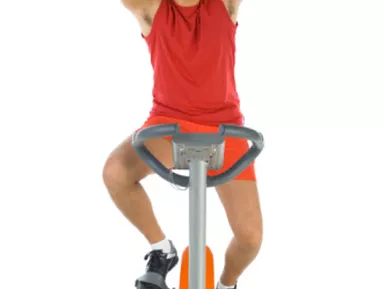
Workout Routines & Beyond: Science-Based Weight Loss
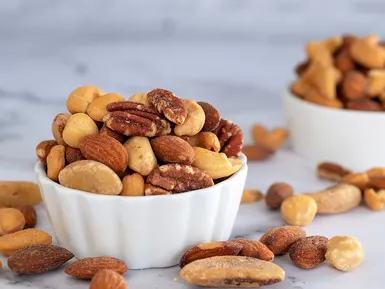
Vitamin E and Weight Loss: Unveiling the Truth

Effective Strategies to Lose Midriff Fat for Women
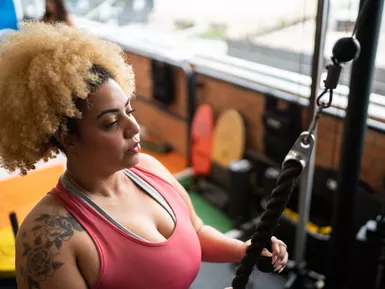
8 Non-Scale Victories in Your Weight-Loss Journey
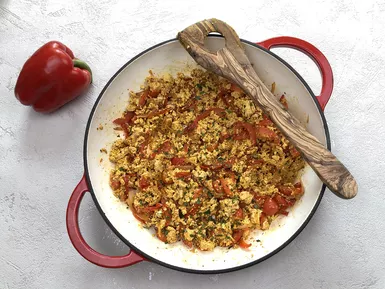
Unveiling the Ornish Diet: A Path to Sustainable Weight Loss

The Power of Social Support in Weight Loss

Personalized Weight Loss: 4 Strategies for Success

Long - Term Weight Loss: Maintaining Healthy Habits
